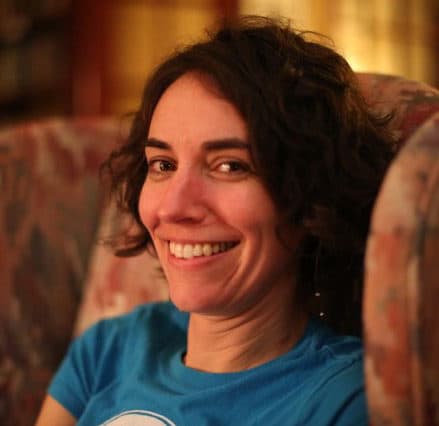Advertisement
Review
Emily Dickinson Biopic ‘A Quiet Passion’ Stirs The Depths Of New England’s Treasured Poet
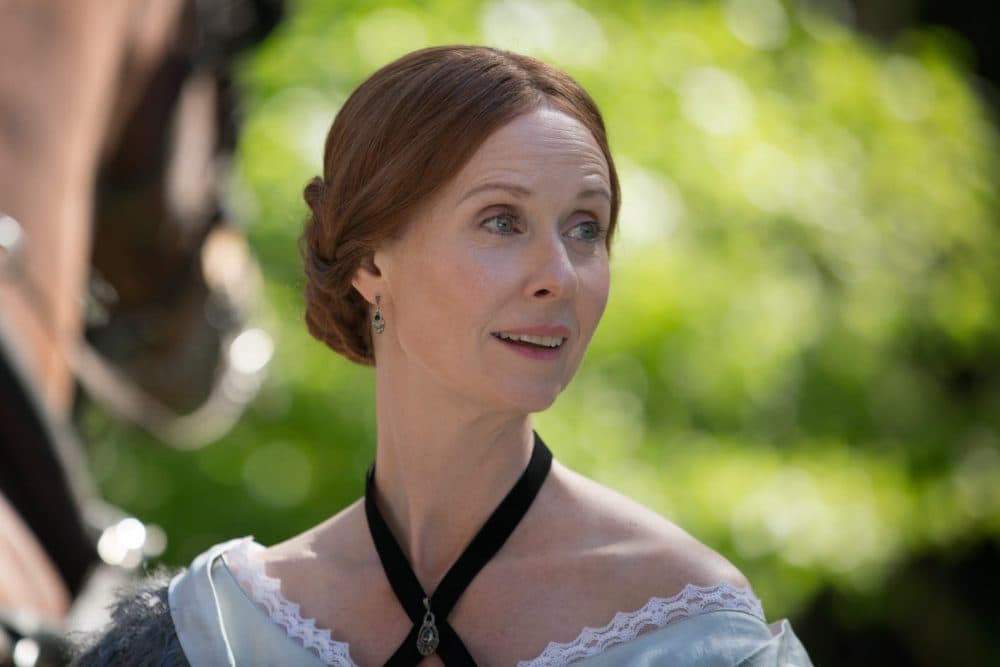
Emily Dickinson lovers — they are legion — are a protective bunch. The notoriously reclusive poet lived all but a few seminary terms in her family’s Amherst home and her now cherished poetry went uncelebrated during her lifetime. More than a century after her 1886 death, whether she wanted notoriety or not is just one of many debates that rage on.
Yet she was not a woman to be pitied for dour withdrawal or inflated melancholy. We know of her some 1,800 poems but at least six biographies, one museum and robust holdings of her original work (at nearby Harvard’s Houghton Library) reveal a vast social network maintained through nearly a thousand letters. It turns out Dickinson was funny, fiercely independent, if not radical, and her genius cloistered her whether editors or suitors dropped by or not.
A well-rounded semblance of Dickinson — devoted sister, competitive baker, backyard horticulturalist, social wit and perhaps most importantly, religious provocateur — is what director Terence Davies embraces and delivers in “A Quiet Passion,” opening at Kendall Square Cinema on Friday, April 14. Lovers of Dickinson may fittingly never be satisfied with any one story but this film is worth serious consideration.
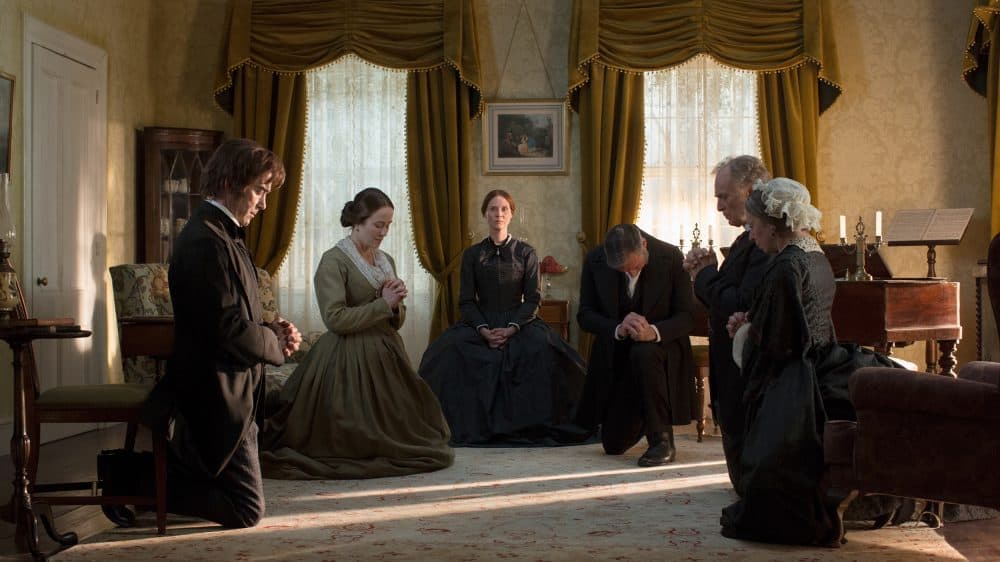
The mustard-colored Dickinson home is the anchor of “A Quiet Passion.” Almost the entire film is set on its property (and much was shot on its preserved location and other nearby spots). But Davies resists an overly claustrophobic lens. The abundance of interior scenes, shot probably on recreated sets, are warmed by candlelight or filled with filtered sun. Plus, winter never seals the family in. Even as deaths and illness close in on Dickinson and natural light leaves the rooms, the windows are cracked and a bird chirps through.
If any netting binds this vision of the poet, for better and worse, it’s family — her parents, sister, brother and later, her brother’s wife. (Dickinson did not marry and died of Bright’s disease at age 55.) Davies often shoots them as an ensemble in wide, static shots or in long pensive pans, as in an early scene at an opera. The camera starts on a female singer on stage, slowly tilts up and right, then holds on a wide shot of the siblings in one box, their aunt, Elizabeth, and father in the neighboring box.
They spar about the gifted performer and Dickinson’s father says, “A gift is no excuse for a female to exhibit herself in that way.” The pan reverses right to left, returning to the stage, then fades to young Emily in her room — her stage — ecstatic to be home. The problem of Dickinson being female is introduced here and carried on as just one of many themes. Another is the tick-tock of clocks, a reminder of mortality as well as a poet’s meter.
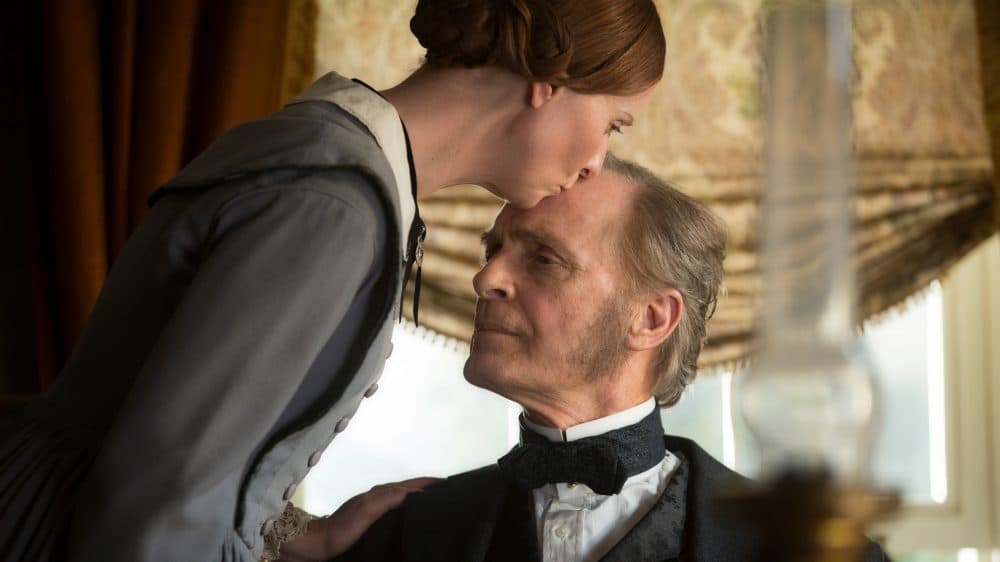
At first Keith Carradine as Edward Dickinson is stagey and conspicuously stiff. Perhaps the idea was to underscore Dickinson’s alienation from him. He softens to the role when Dickinson, once home (dubbed a “non-hoper” at seminary), asks permission to write at night. Emma Bell plays the young red-headed upstart with magnetic fervor. A portrait of Bell morphs into a portrait of Cynthia Nixon (“Sex and the City”) in transition to the adult portrayal of Dickinson.
I went in rooting for Nixon and wanted to adore her in this role; but I had to nudge myself along. While most times her melodically wry and pointed delivery of Dickinson’s poetry — more than a dozen poems are beautifully interwoven into the script — felt apt. But at times it also felt pinched; the cadence narrow and flat. Part of me wanted a voice coach on the scene reminding Nixon to raise her soft palette to give the poet’s incantations earthier depth.
What was believable and endlessly pleasing was Nixon’s delicate handling of the spectacular emotional and philosophical range that gripped the poet. She was a woman plagued, to the greatest depths, by her relationship to God. She was not immune from the times or surroundings, far from it, and yet she wasn’t tethered by the edicts of the Bible, the sermon, or proper grammar either. Indeed her poetry — still shockingly inventive — boasts a cascade of marks that may never be fully understood.
Advertisement
Nixon encompasses her highs and lows as well as her talent for banter (“Let’s not be anything today except superficial,” she says to her friend Ms. Buffam as they enter a commencement ball). Jennifer Ehle, as her sister Vinnie, is an accomplished foil to much of Dickinson’s existential turmoil.
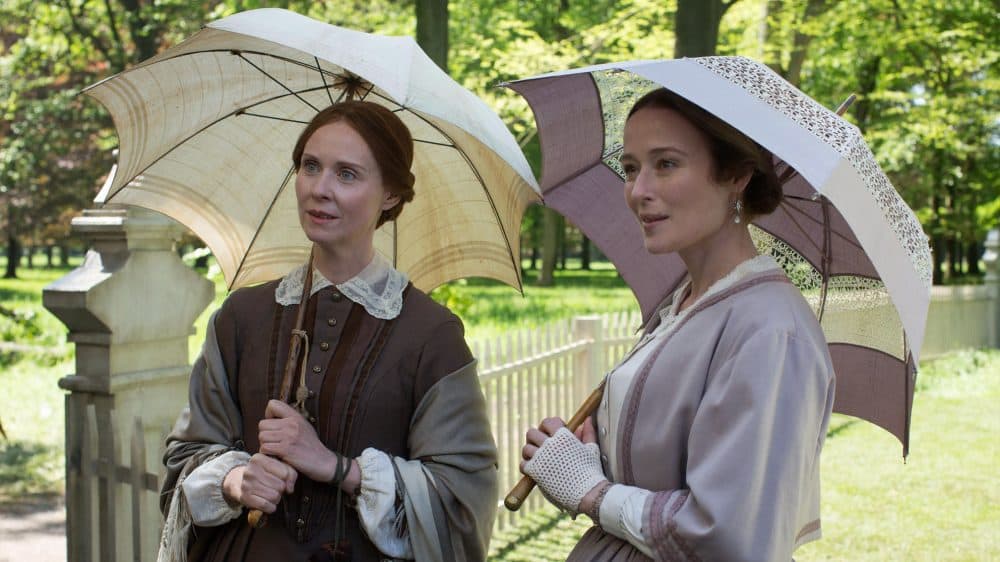
The turmoil gets its due in on screen relationships and in the audible poems but one critic's response to a Dickinson exhibit in New York City got me thinking. The exhibit, at the Morgan Library & Museum, showcases poetry in her original hand. The critic suggested that an enormous projection of her writing on a wall would’ve been a helpful addition. It occurs to me that this could’ve been one of Davies’ tactics, too. A projection wouldn’t have adhered to his otherwise diligent historic accuracy but the photographic morphing (in the end Nixon turns into the daguerreotype that most picture when they think of Dickinson) was a brilliant turn. There might have been ways to see her inventions instead of only hear them.
Davies wrote the script, he said following a screening at Harvard Film Archive, after reading six biographies and going with what felt right. He downplayed Dickinson’s close relationship with sister-in-law Susan, for instance. Yet it must be said that his whip smart screenplay is also downright hilarious. The one-liners abound and seeing it with an audience no doubt adds to the appreciation. (“Cherish your ignorance, aunt, you’ll never know when you need it,” Dickinson says to a spot on Annette Badland as Aunt Elizabeth in just one example.)
The rapid-fire dialogue in Davies' script mirrors the way he talks to the Harvard Film Archive audience, with the energy of a nutty professor. A man of letters who somehow chose a camera instead. He apologized for being a Brit who has interpreted the life of one of America’s greatest literary lights. He previously adapted Edith Wharton’s “House of Mirth” (2000) with similar care. These are not easy films to get made and Davies persists with a self-reliant vision.
He called this project a labor of love. “The cast and crew made it with all their hearts and all I ask is that you watch it with yours,” he said. The lives and homes of America’s literary legends are all yours, Terence Davies. Come back anytime.
